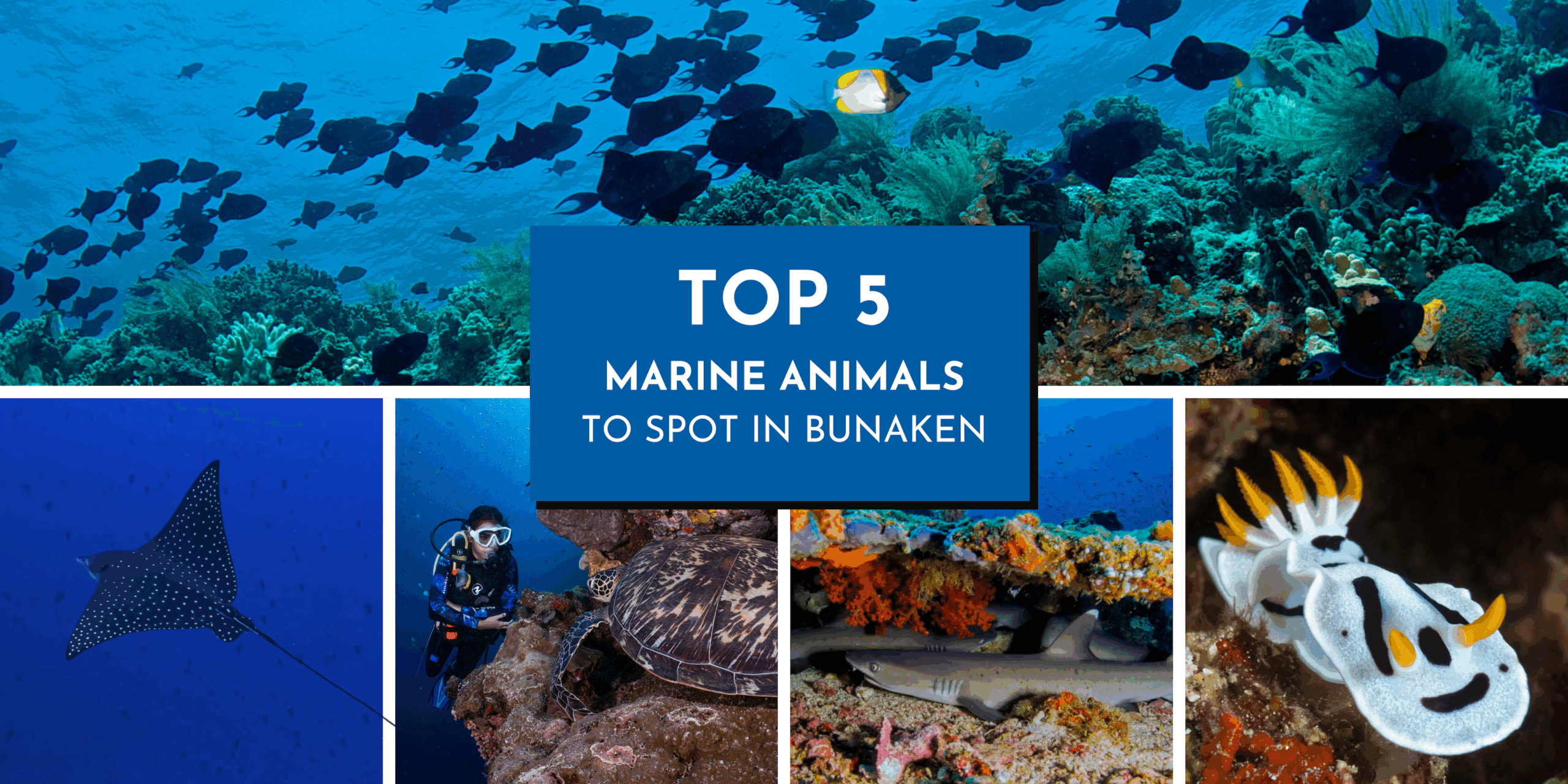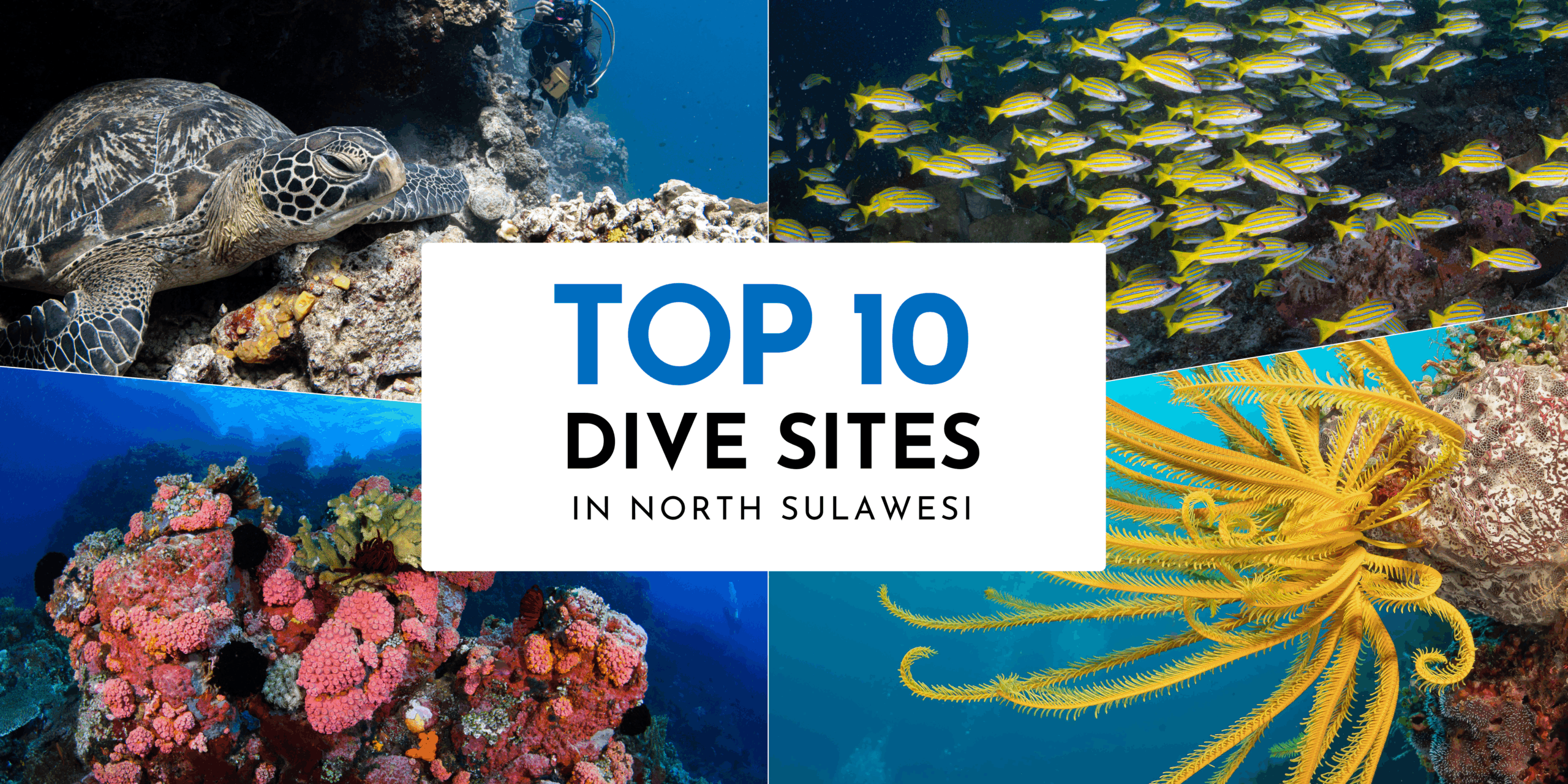
Ultimate Guide to Frogfish of North Sulawesi
Frogfish are a highlight of diving here in North Sulawesi and the variety and number of species we have across our reefs is astonishing. Frogfish have a number of unique characteristics, which make them completely different to other marine fishes.
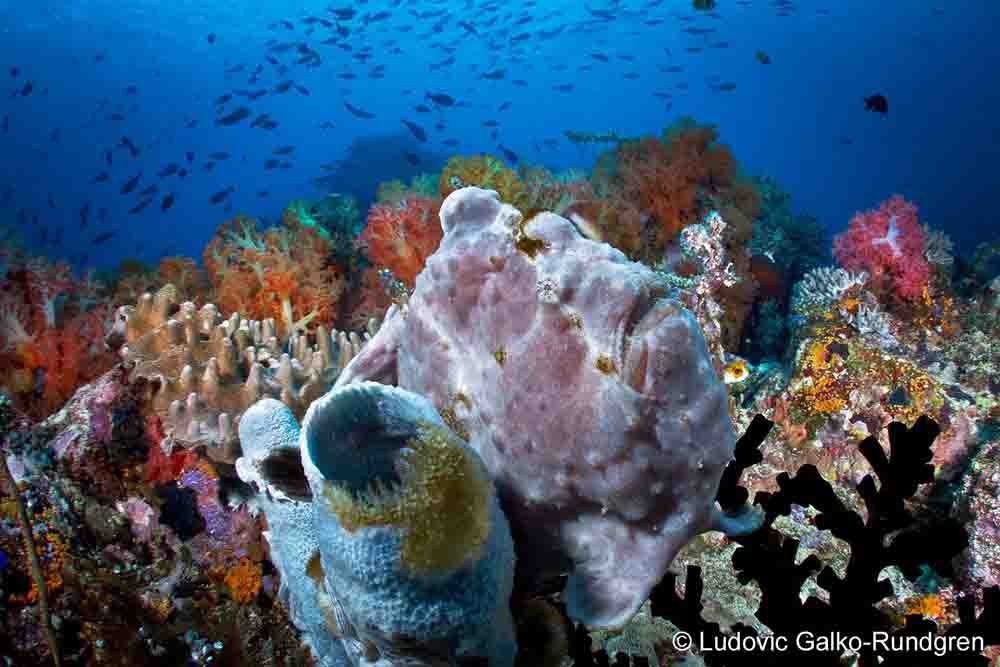
A Giant Frogfish at home at a Bangka reef
What Makes a Frogfish Unique?
1. Frogfish are also known as anglerfish because of the fishing rod-like appendage which grows from their head – known as the rod or illicium. At the end of the rod is a lure (esca) which varies in appearance depending on the species. The lure is what the frogfish uses as bait.
2. Once prey is attracted to the lure it will be attacked at lightning speed and swallowed whole.
3. Frogfish are bottom dwellers that rarely swim as they prefer to lay motionless and wait for prey to approach. This also makes them great underwater photography subjects!
4. When frogfishes move they usually “walk” using their pectoral and pelvic fins. They can also “jump” along the bottom – hence their name.
5. When identifying different species, color is not an indicator as they pass through several color phases.
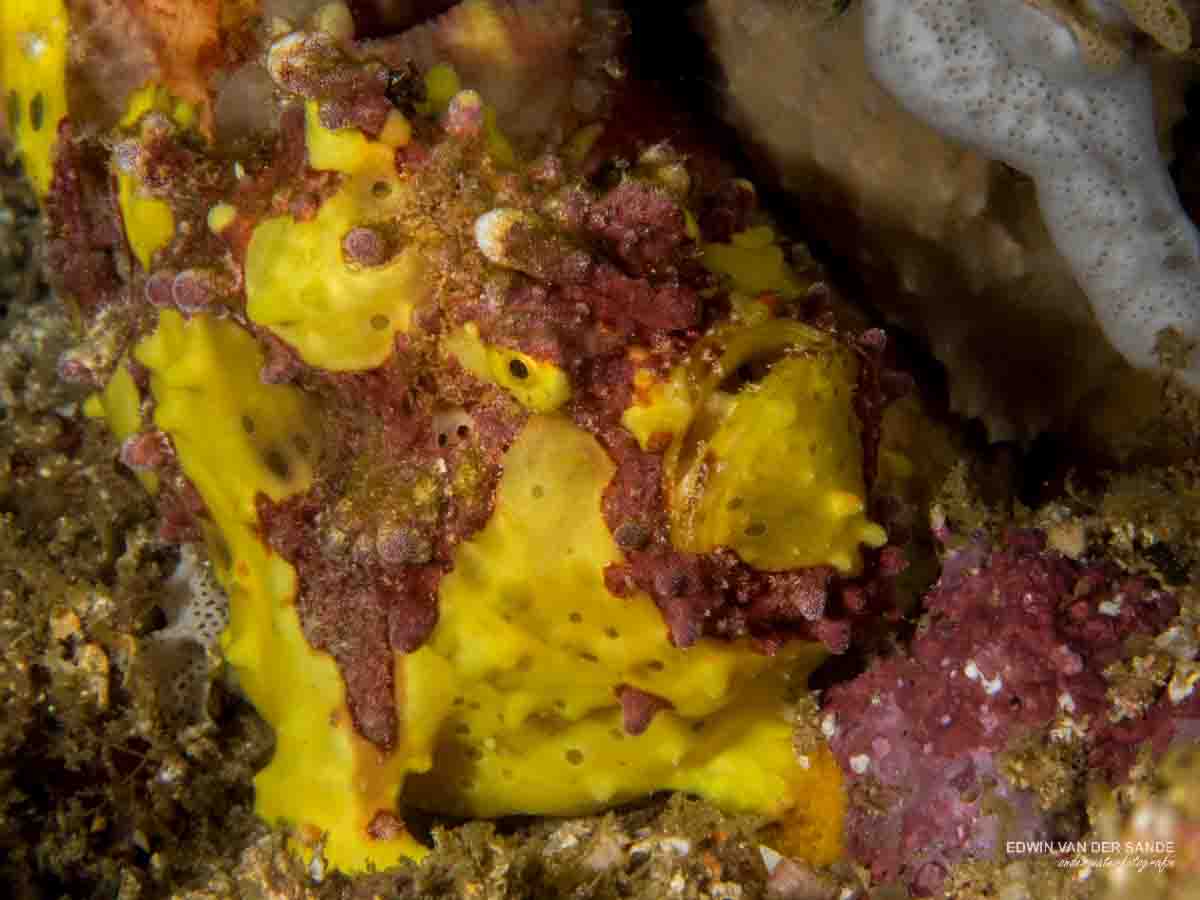
Yellow Warty Frogfish (Antennarius maculatus) found in Manado Bay
How to Identify Frogfish Species
Here are some of the most common species we see here in North Sulawesi and how to identify them… it’s not always so easy!
Giant Frogfish (Antennarius commerson)
As it’s name suggests this is a large species which can grow up to 45cm. No other frogfish species reach this size. The giant frogfish displays a variety of color phases according to their habitat. Color phases include white, yellow, tan or brown, orange, pink, red, green and black! Unlike other frogfish their skin is smooth although some individuals may have a few warty projections. This frogfish’s rod is very thin and the lure below is white and bushy, made up from numerous small filaments.

A large Giant Frogfish hanging out between corals at Bangka Island
– Giant dive sites: Tanjung Kelapa in Manado Bay, Batu Mandi in Bangka and Pulau Abadi in Lembeh
Warty Frogfish (Antennarius maculatus)
Identifying the warty frogfish is relatively easy – it’s warty! This species’ body is covered in wart like bumps as well as scab like red patches – which tend to be on the side of the head, top of the dorsal fin and at the base and tip of the tail fin. The most common color variations are yellow and white but they can also be pink, red and shades of brown and black. This is a small species which grows up to 11cm. The warty frogfish’s lure looks like a small shrimp or fish and is brown with white details. The rod is very long, thin and translucent.
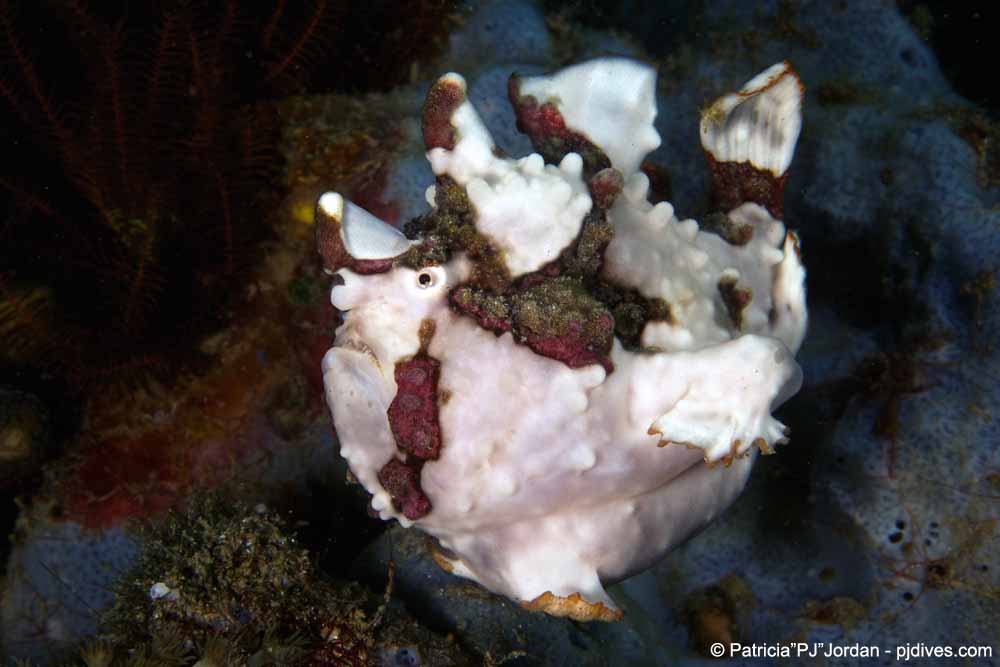
This frogfish’s body is covered in wart like bumps as well as scab like red patches
Clown Frogfish (Antennarius maculatus)
The clown variation is not an individual species – it’s actually a juvenile warty. Clown frogfish are often just a couple of cm’s or even less.
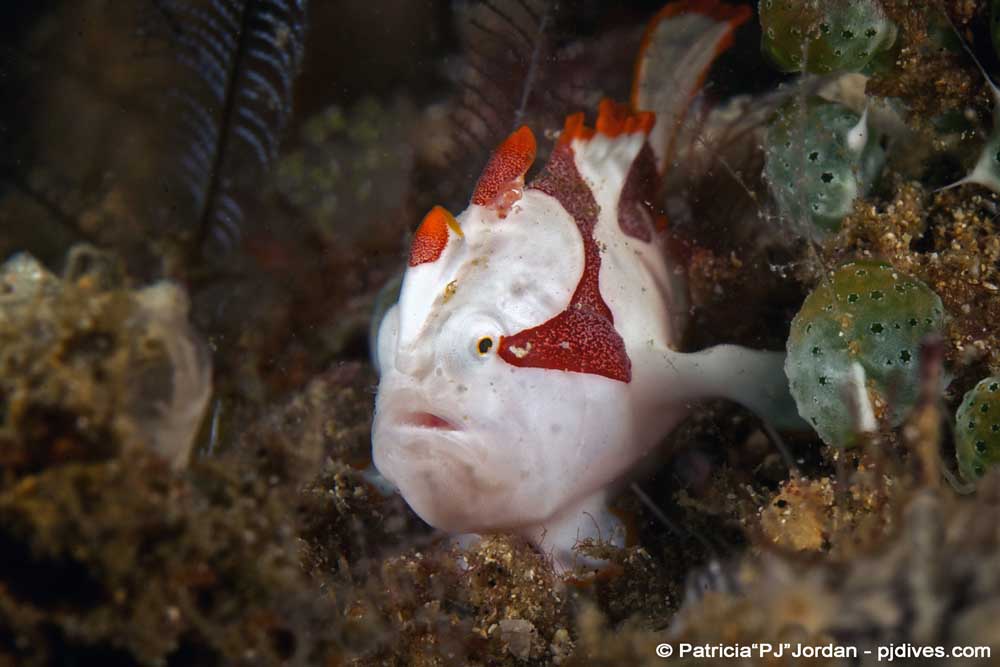
If you look carefully at the red / orange patches on it’s body they are in the same places as the red patches on the warty frogfish pictured above
– Warty and clown dive sites: Murex Manado house reef, Pantai Kecil in Bangka, and Makawide & Jahir in Lembeh.
Painted Frogfish (Antennarius pictus)
This species is identifiable by the dark spots or rings which cover its body. It’s a medium sized frogfish growing up to around 21cm and its coloration is highly variable from bright orange, bluish grey, yellow, green, mottled brown and purple, pink, brown, black and white. Painted frogfishes have a long, thin rod with a translucent lure resembling a small crustacean.
Unlike mature painted frogfishes, juveniles are highly recognizable by their coloration which is a black body with scattered bright orange spots and ornate blue fin borders.
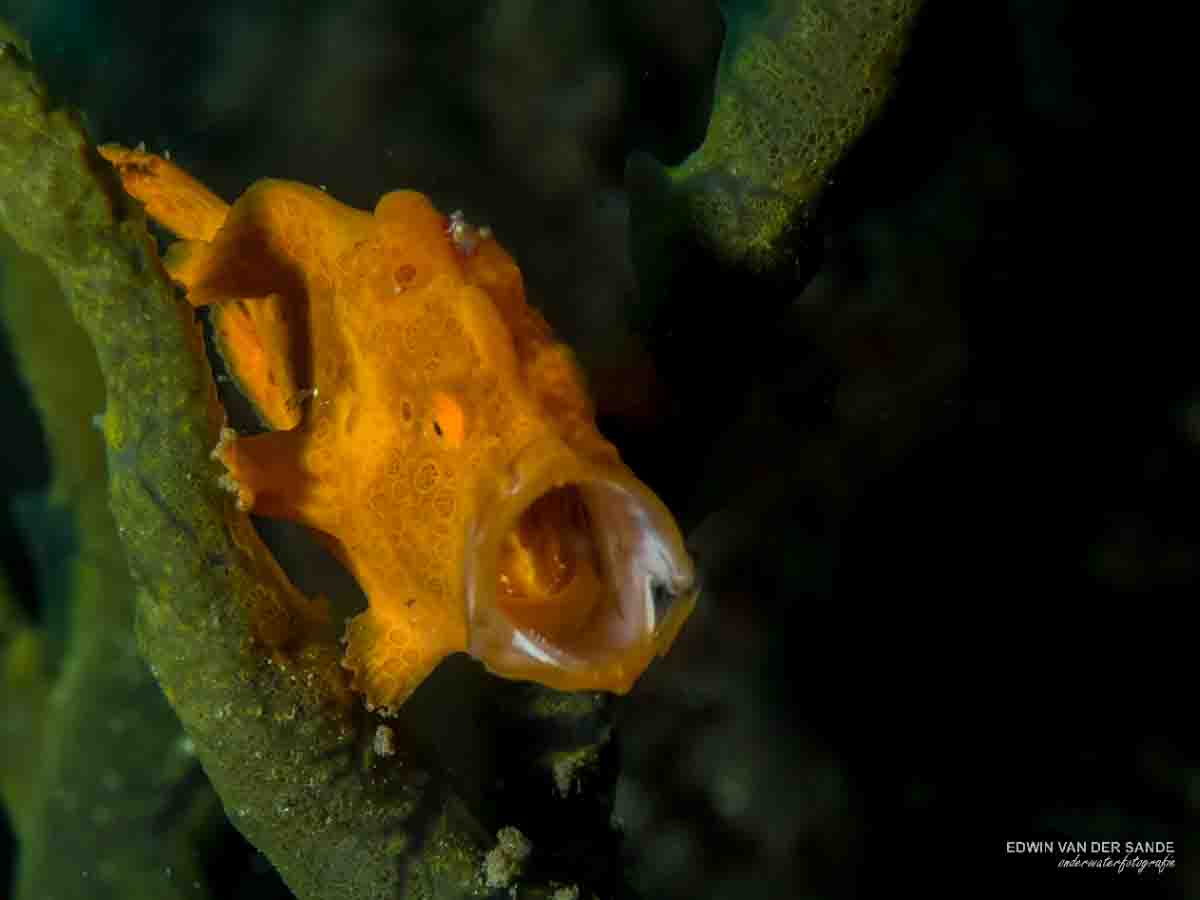
Photographers wait to catch a yawn of a Frogfish, a Painted Frogfish in this image
– Painted dive sites: Bethlehem in Manado Bay, Peter’s Sponge in Bangka and Bianca in Lembeh.
Hairy Frogfish (Antennarius striatus)
When you see a hairy species it’s usually impossible to mistake it for any other but not all individuals are as hairy as each other. The “hair” on this species is actually numerous thin skin appendages that give the appearance of hair. The density of appendages varies according to the individual. Most common color variations are green – brown so they look like algae but when they are found living near sponges they can be bright yellow or orange and usually with less hair so they look more like the sponges. The lure of the hairy is one of the largest and most visible; it is made up of between 2 to 7 thick worm-like appendages. The hairy species is also known as the “striated” frogfish.
– Hairy dive sites: City Extra in Manado Bay, Peter’s Sponge in Bangka and TK dive sites in Lembeh.
Ocellated Frogfish (Antennarius sp.)
This small species grows to just 5cm, has a black to dark grey body color and is easily recognizable by the large pale to orange edged black spot covering the base of the rear dorsal fin and back. The ocellated frogfish is a solitary species which we spot on sand and rubble patches – it’s one of the rarer species that we see here in North Sulawesi.
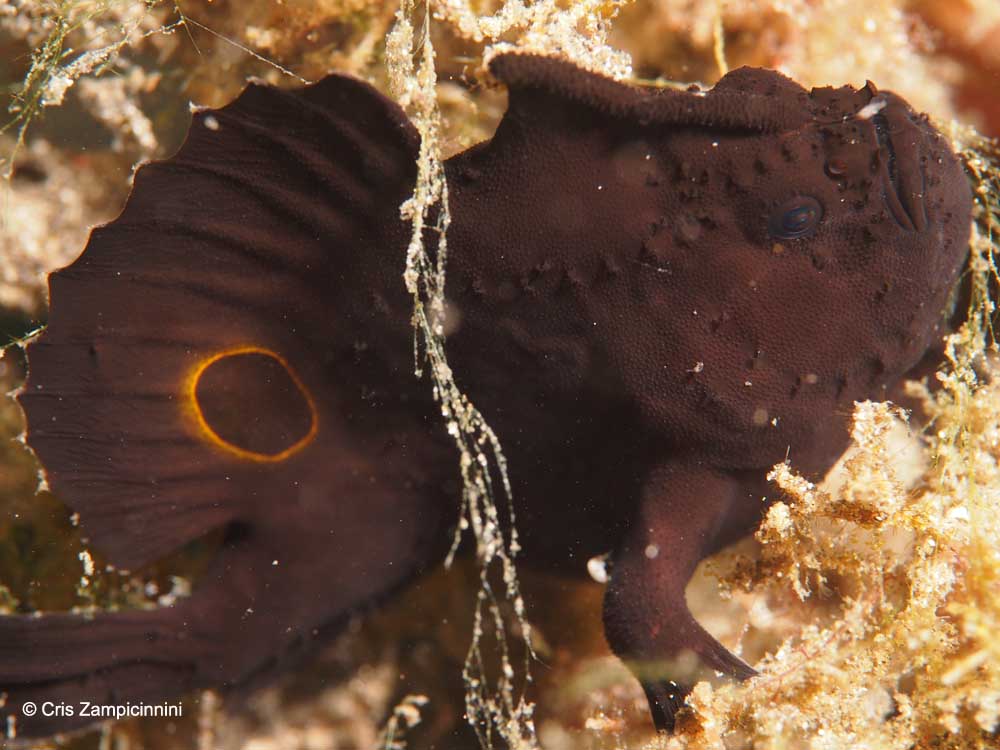
The ocellated frogfish is a solitary species.
– Ocellated dive sites: Peter Sponge in Bangka
Randall’s Frogfish (Antennarius randalli)
This species grows to just under 5cm and is identifiable by the small to large white spots which appear generally behind the eye and above the pectoral fin and on the upper edge of the tail fin. Color variations are more limited in this species with the common shades being yellow to red, brown and black – matched accordingly to their surroundings. Another distinguishing feature is their long, claw like pectoral fins and their short rod with a split filamented lure.
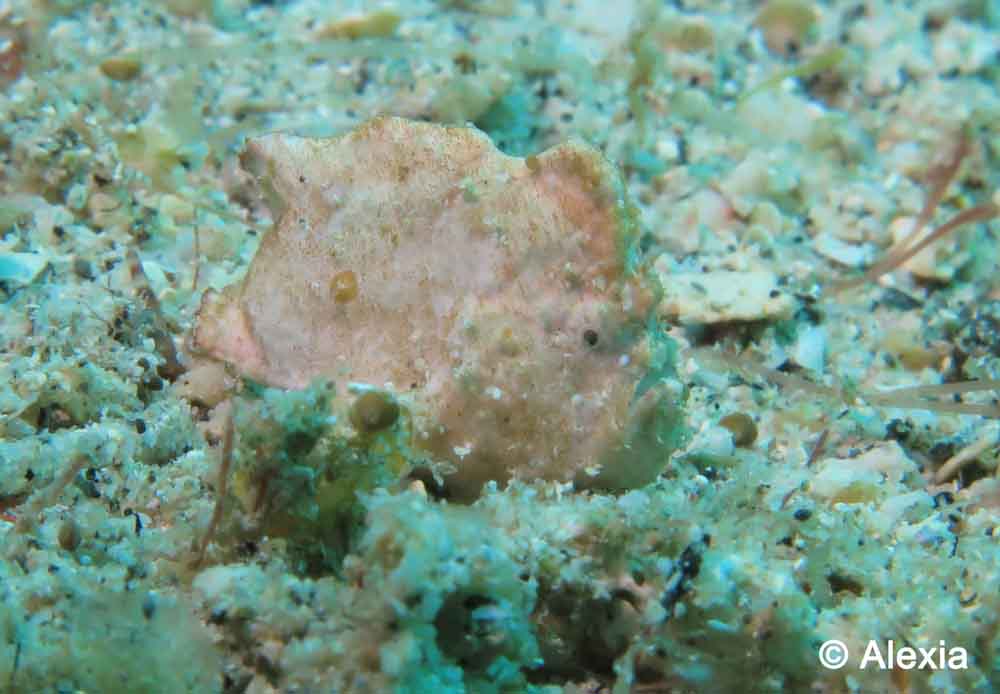
Randall’s Frogfish
Randall’s dive sites: Peter Sponge in Bangka and in Rojos in Lembeh
Sargassum Frogfish (Histrio histrio)
This is a rare species which takes its name from the sargassum seaweed which it inhabits. Sightings of this species can be close to shore or out in the open ocean as it will float with the seaweed. It’s distinguishing characteristic is its large pectoral fins with claw like tips and it has lots of leafy appendages. The sargassum is mottled with darker lines on the fins and usual color variations include cream, beige, brown and green. The one pictured here was rescued by our staff at Murex Bangka as it was found on the beach where its seaweed had washed up. The staff quickly scooped it up and returned it to the sea!
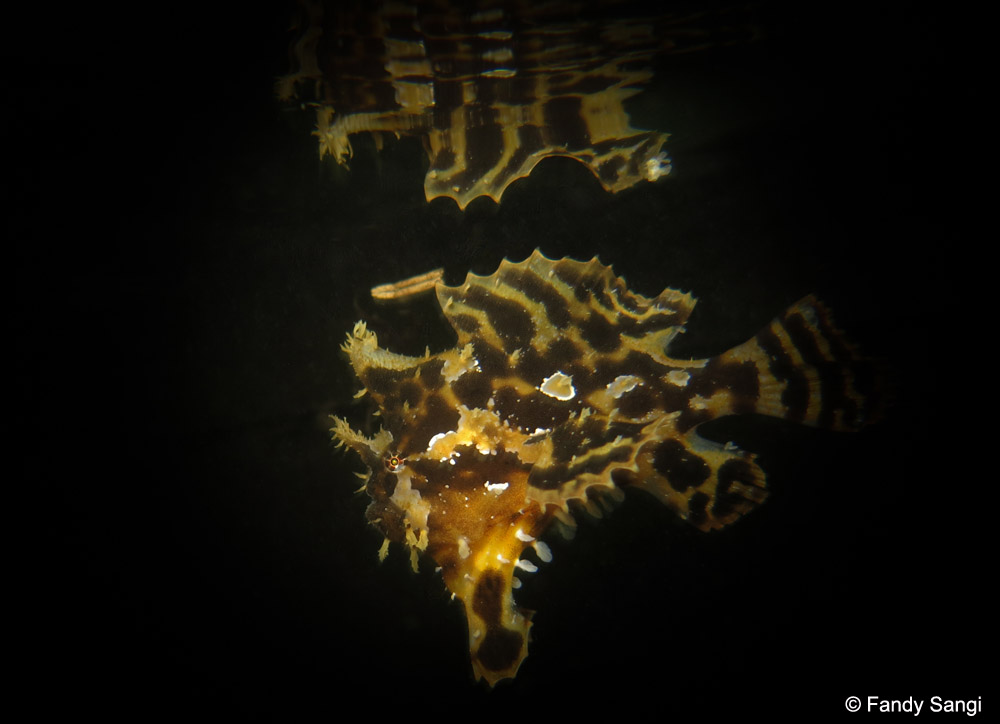
Sightings of this species can be close to shore or out in the open ocean as it will float with the seaweed
Sargassum dive sites: No particular site but always check out floating sea grass to find a Sargassum Frogfish
Want to learn more about the fascinating frogfish species of North Sulawesi? If you’re ready to experience it firsthand, contact us at reservations@murexresorts.com.
Immerse yourself in Indonesia’s most beautiful dive sites. Check out our Murex Resort rates and consider the Passport to Paradise option for an extraordinary adventure. For full details and reservations, explore our rates and secure your spot. Get ready to explore the amazing underwater world of North Sulawesi with us.


